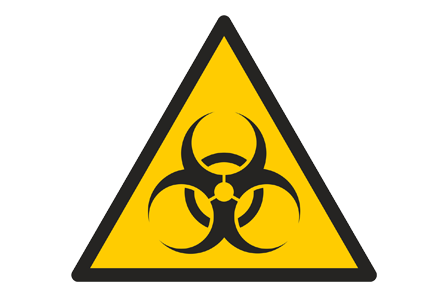What are Biological Agents?

Biological agents are widely found in the natural environment and as a result found in many work sectors. They include bacteria, viruses, fungi (including yeasts and moulds) and internal human parasites (endoparasites). The majority of these agents are harmless however some may have potential to cause ill health.
The Effects of Biological Agents
As they are usually invisible, it is often difficult to appreciate the risks they present. As a worker you may be harmed by:
- being infected by a biological agent,
- being exposed to toxins produced by the biological agent, or
- having an allergic reaction to the biological agent or substances it produces, for example, enzymes.
Biological agents have the ability to replicate rapidly, require minimal resources to survive and some can infect at very small doses.
Exposure to Biological Agents
In the workplace, workers may encounter biological agents because they:
- intentionally work with them, for example, a laboratory worker or researcher working with a specific biological agent, or
- unintentionally work with them, whereby the employee is exposed to the biological agent due to the work they do, for example, a healthcare worker who is exposed to a blood borne virus, a laundry worker who receives a needlestick injury or a farmer who is exposed to an animal disease that can also affect humans (a zoonose).


